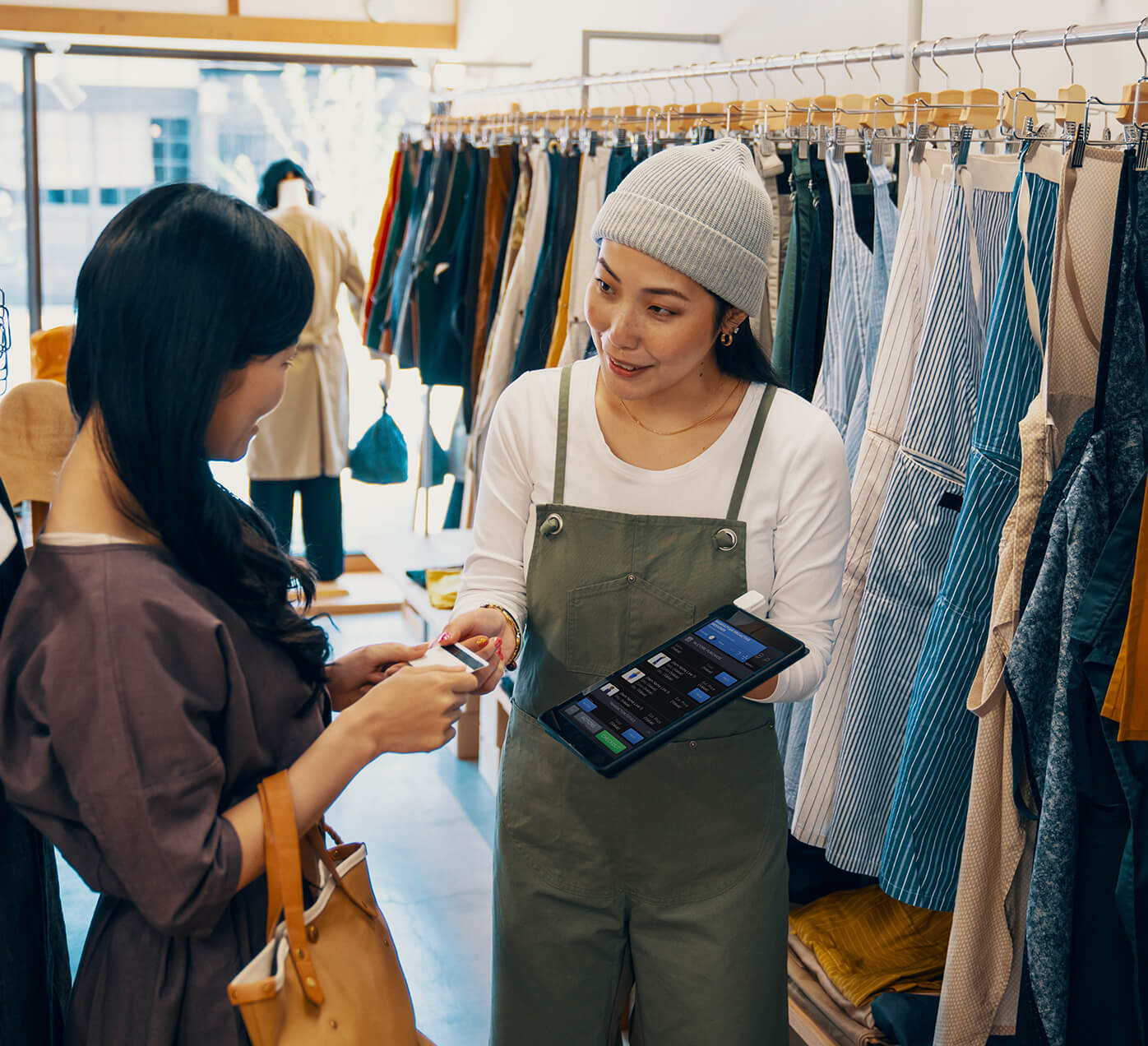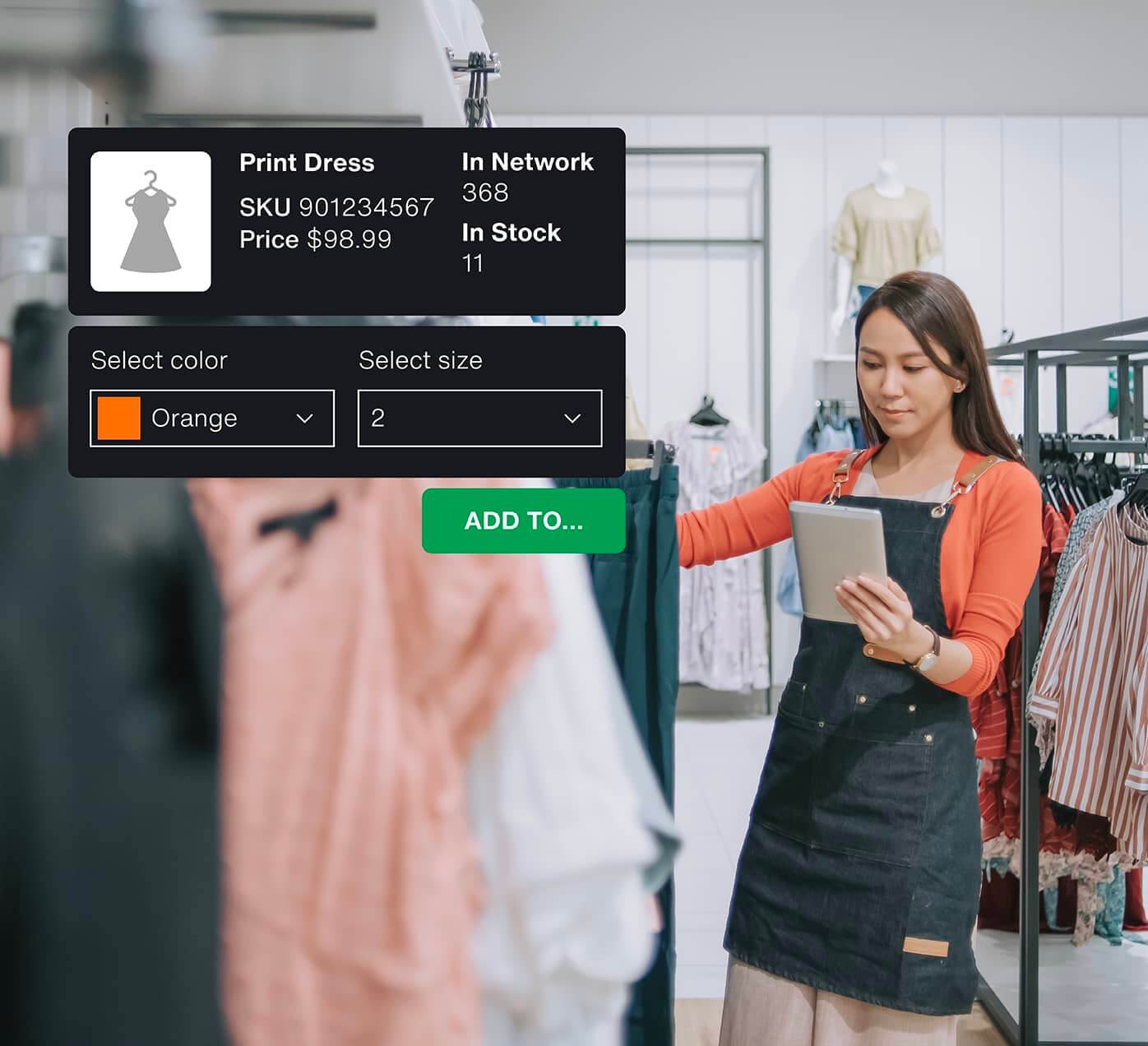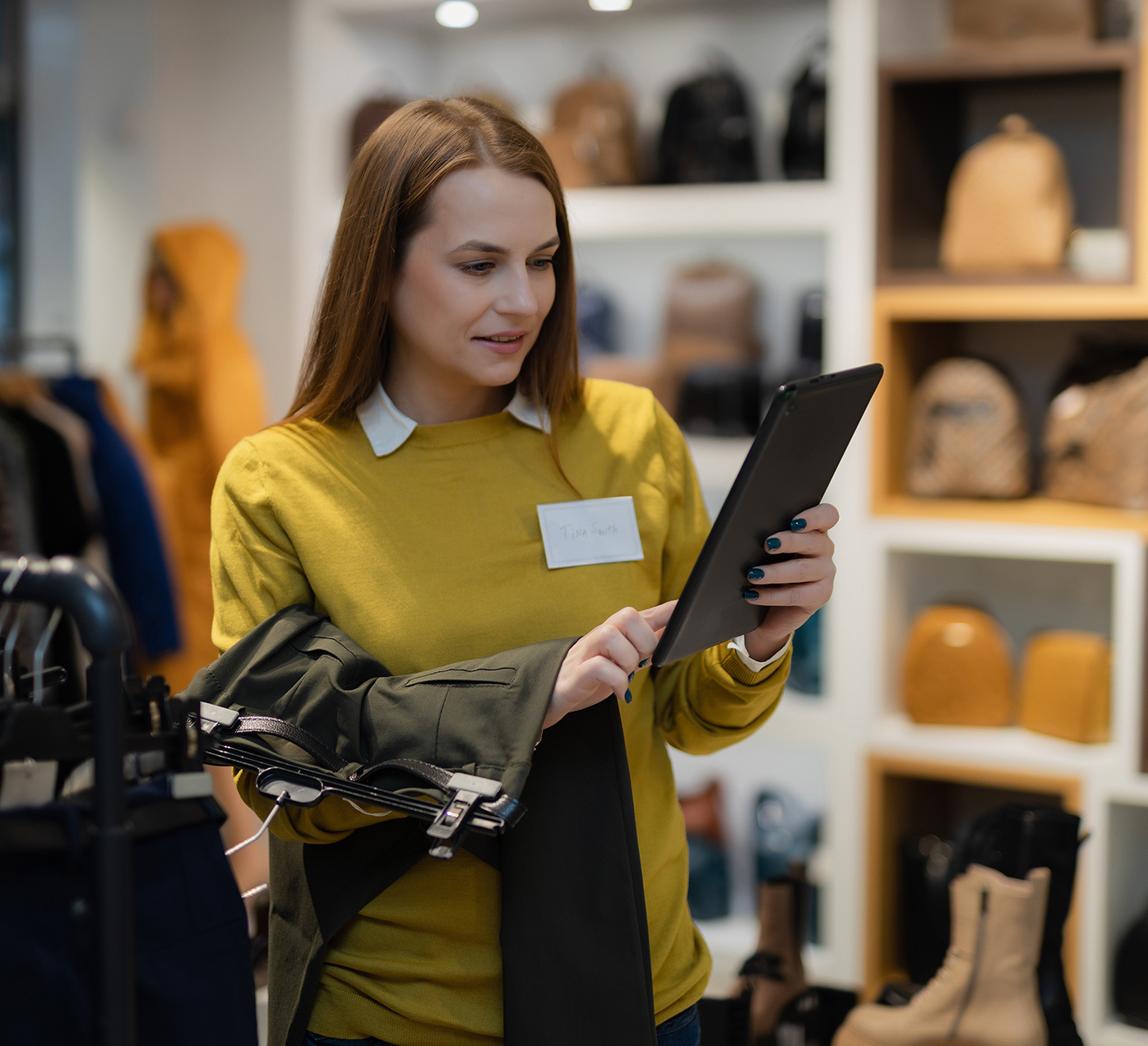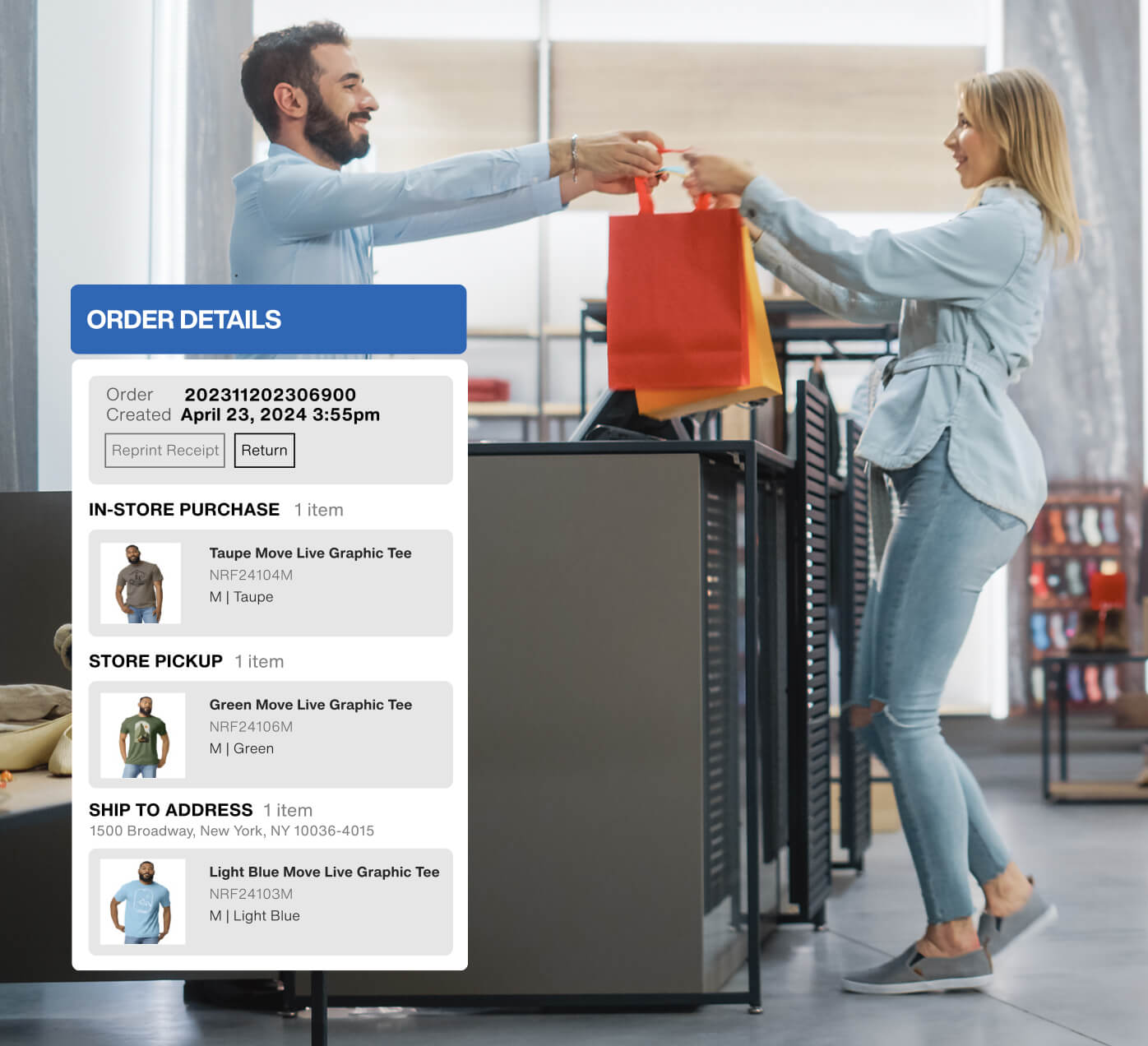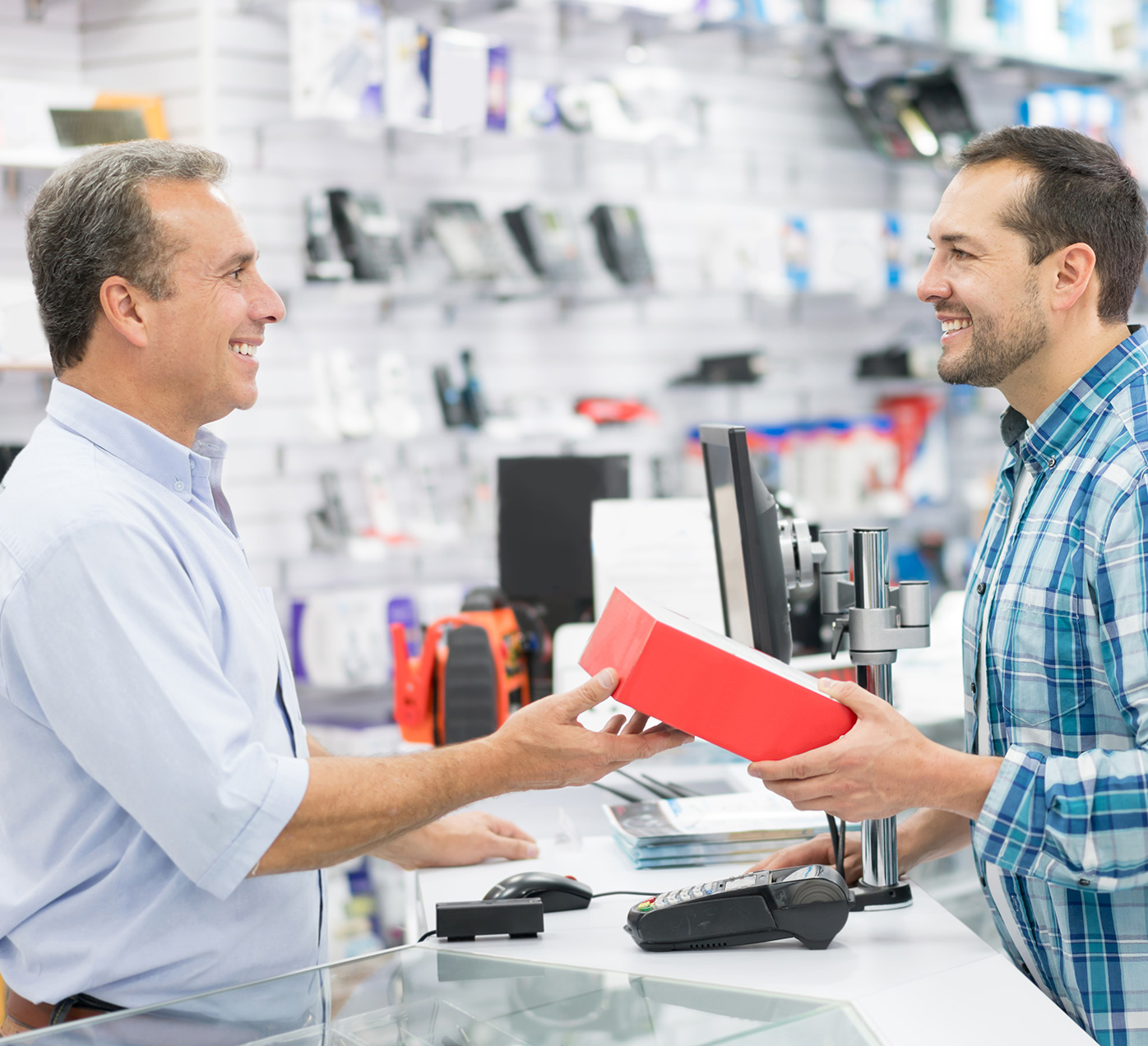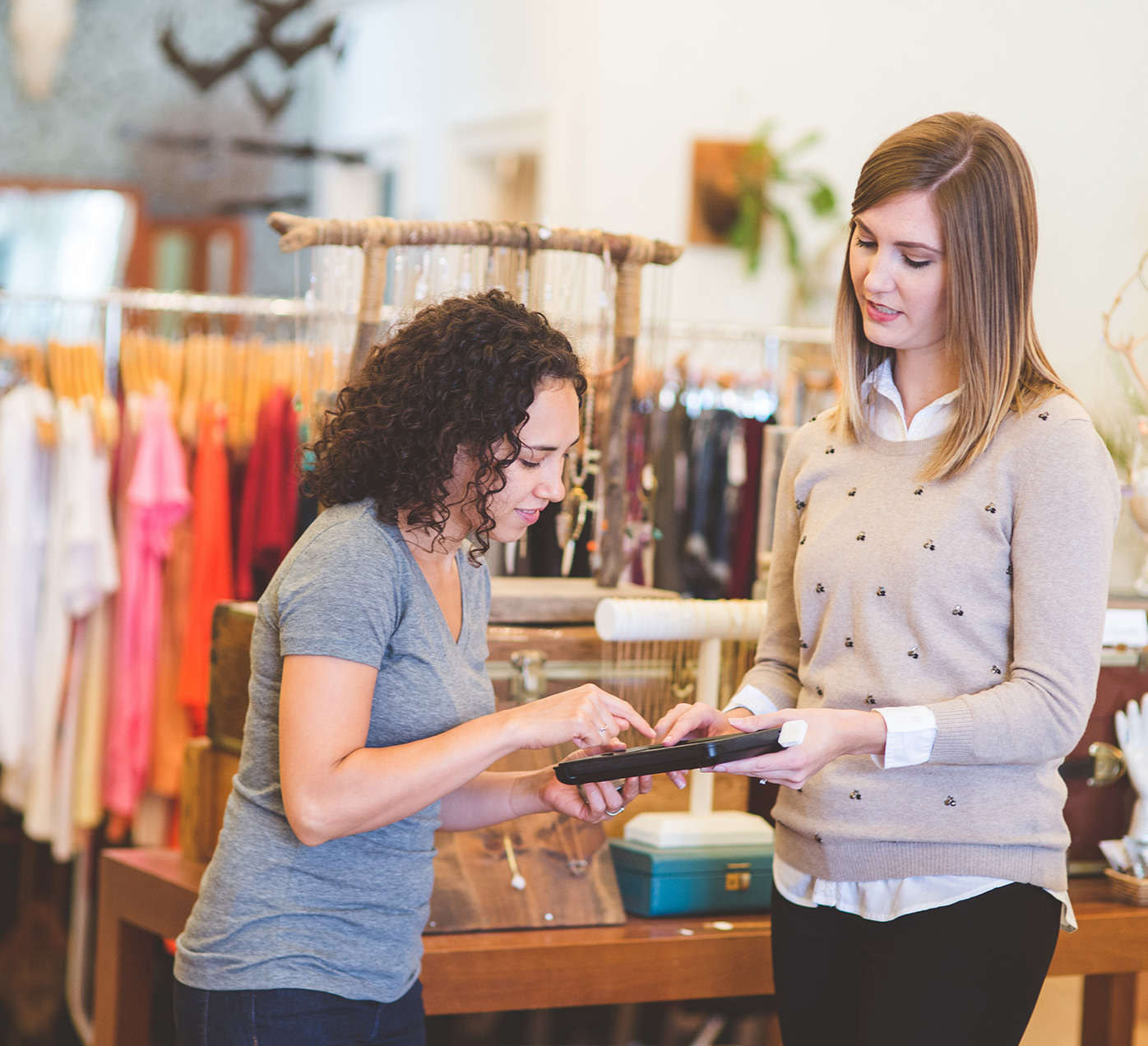Modern Stores are Seamless
Seamless selling is the second of the five essential elements of creating modern store experiences. It is crucial in modern stores as it provides the convenient and complete purchase experience that shoppers value.
Modern Shoppers Want Omnichannel Shopping Convenience in Stores
Seamless selling has become a crucial strategy for modern stores to provide a smooth and positive purchase experience that caters to the customer's needs in the moment. This strategy leads to an increase in store foot traffic and sales.
Seamless selling is not about limiting customers' choices but offering them more possibilities. It supports omnichannel purchases, which means that even if an item is unavailable in the store, the customer can still purchase it and choose how they want it. This flexibility allows stores to cater to a wide range of customer needs and enhances their shopping experience.
The checkout process is optimized for omnichannel purchases, making it easy to complete mixed shopping carts with items ready for immediate walkaway and future fulfillment. Modern stores streamline all necessary checkout steps and details into a single transaction, saving customers time and improving productivity. When it's time to pay, seamless selling offers a wide range of payment options to make checkout even more convenient.
Supporting Sales Across the Store Floor
Today's customers are increasingly intolerant of long checkout lines, often opting to leave the store empty-handed. This inconvenience not only leaves a negative impression but also hampers the likelihood of them returning to the store in the future.
However, the introduction of mobile devices in stores can revolutionize the customer experience. By equipping store associates with these tools, they can swiftly and effectively address customer needs anywhere in the store. They can locate inventory, prepare carts, and facilitate checkout without the need for a traditional checkout desk. This streamlined process not only makes the shopping experience quicker and more convenient but also fosters a higher likelihood of repeat store visits.
Outcomes of Supporting Sales Across the Store Floor
-
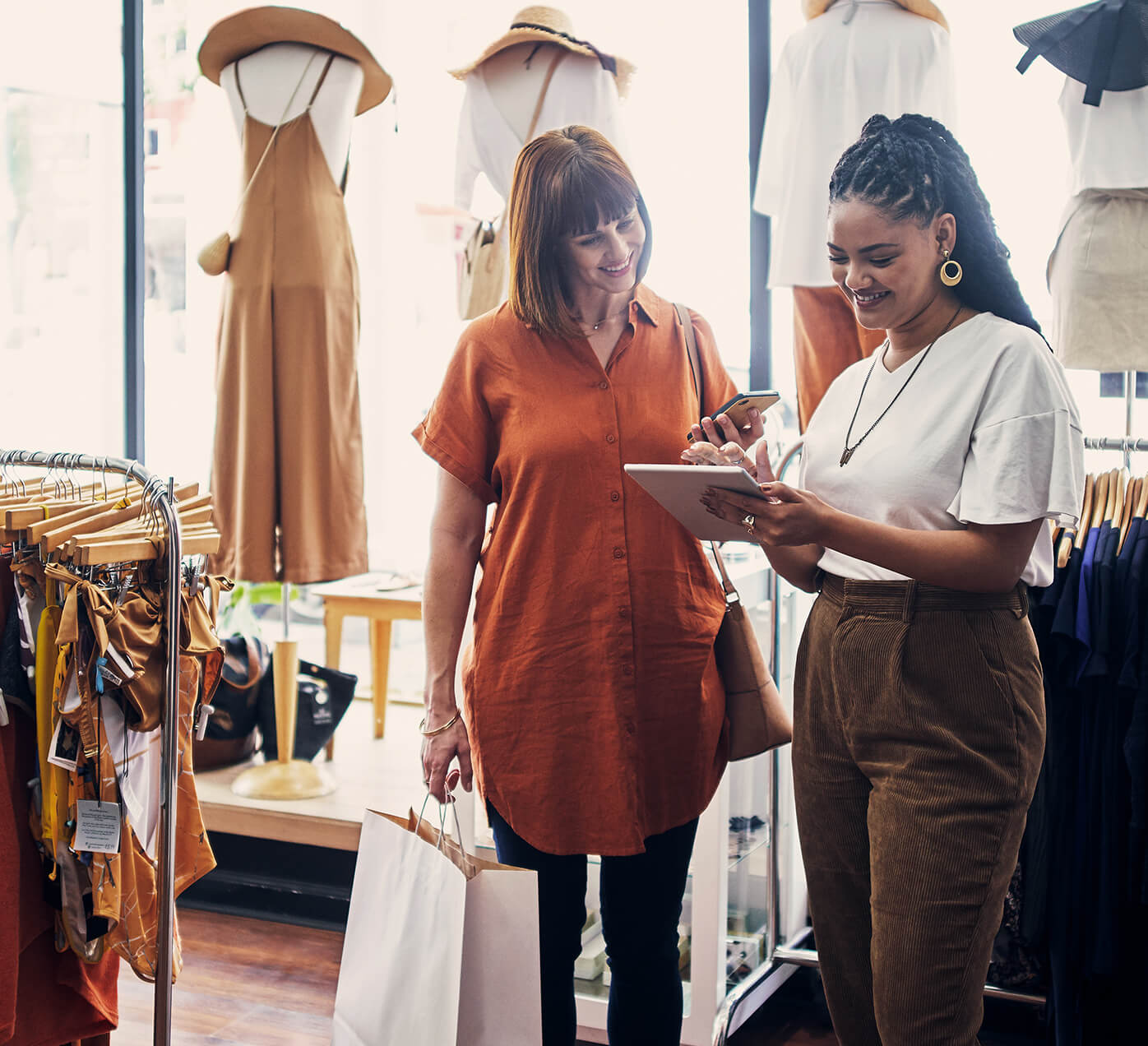
Enhanced Customer Convenience
Store associates using mobile devices for customer checkout reduce checkout waiting time, improving customer convenience and satisfaction.
-
Improved Responsiveness to Customer Needs
With real-time data access, associates can respond quickly to customer inquiries, improving the customer experience.
-

Increased Productivity
Mobile solutions streamline various store tasks, increasing productivity and efficiency and allowing associates to focus more on customer service.
"76% of shoppers said that retailers that employ mobile technology in stores for use by customers and store associates helps provide a faster shopping experience."
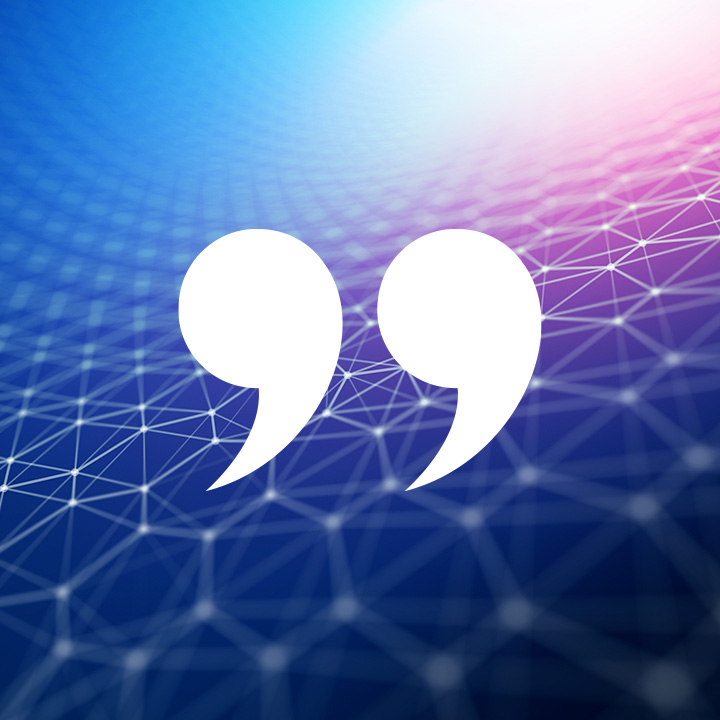
Selling from Inventory Anywhere
Modern shoppers have high expectations for their in-store shopping experience. They expect products to be available in stores just as they are online. To meet these expectations, stores must be able to sell and order from a retailer's global inventory network. This ability helps increase revenue and prevent lost sales by ensuring that there is always high inventory availability.
To achieve this, it's important for stores to empower their associates as omnichannel closers. This means providing them with the tools to locate and sell inventory from different sources, such as alternative stores, distribution centers, and more. Once inventory is found, point-of-sale systems must enable easy checkout for items for immediate walkaway or items that are ordered for fulfillment from the global inventory network. This capability is commonly known as 'Endless Aisle,' and it can only be successful if retailers prioritize accurate global inventory visibility across all sales channels.
Outcomes of Selling from Inventory Anywhere
-
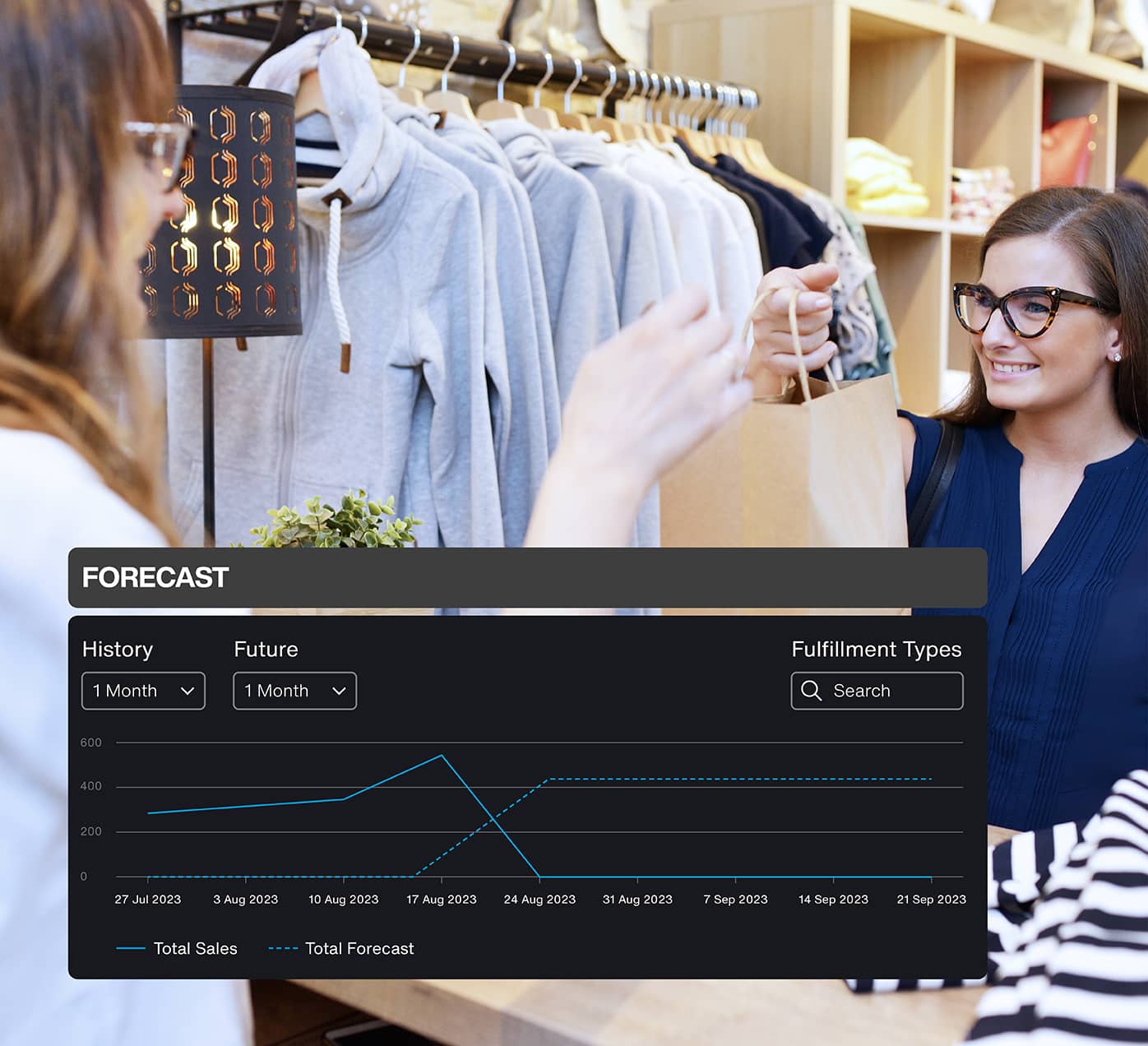
Reduced Lost Sales Due to Out-of-Stock
Stores can save sales and prevent lost revenue by offering customers a way to buy an item that is out of stock.
-
Increased Customer Satisfaction and Loyalty
Retailers can prevent customers from switching to other retailers by ensuring they always get the products they need.
-
Higher Revenue Through Offering a Wider Assortment
Endless aisle selling allows retailers to recommend items outside of store inventory, increasing revenue from cross-selling and up-selling.
"37% of shoppers will shop at another retailer if their desired product is out-of-stock."

Streamlining Omnichannel Checkout
Omnichannel shopping in stores is a great way to meet the needs of modern shoppers. It allows customers to buy items from different sources, including shipping to the customer or picking up at another store. While this flexibility can improve customer satisfaction and retailer sales, it can also complicate the checkout process. Finalizing a checkout for mixed fulfillment carts can be slow and require multiple steps for an associate to complete, increasing checkout times and lines.
Modern stores optimize checkout omnichannel purchases. This approach allows customers to buy and pay for items for immediate walkaway and future order fulfillment in a single, convenient transaction. Omnichannel checkout guides store associates through all the steps and details required to quickly finalize mixed cart checkout, whether at cash wraps or mobile devices. By streamlining the process, stores can assure customers of a smooth checkout experience, improving satisfaction and sales.
Outcomes of Streamlining Omnichannel Checkout
-
Increased Sales
Checkout optimized for omnichannel lead to larger cart sizes and higher conversion rates when customers can quickly check out.
-

Improved Customer Loyalty
Providing a convenient shopping experience enhances customer satisfaction and loyalty, encouraging shoppers to repeat store visits.
-
Reduced Store Costs
Omnichannel checkout optimizes associates' time spent on checkout, reducing human resource needs to support omnichannel selling in stores.
"40% of shoppers say that checkout is the #1 area retailers should focus on in order to improve the in-store experience."

Expanding Payment Options
Modern shoppers strongly prefer flexible payment options to complete their purchases. Stores that don't support a shopper's preferred payment method risk losing a sale. Therefore, stores must provide modern shoppers with flexible payment options that meet their expectations of convenience and ease.
By offering popular alternative payment methods, such as digital wallets and contactless payments, physical stores can attract more shoppers and increase their chances of making a sale. Point-of-sale systems in modern stores need to consolidate traditional and next-generation payment methods under a single checkout umbrella, providing customers with flexibility and speed at checkout. Juggling multiple payment portals to handle different payment methods is not an option for store associates to meet modern shoppers' expectations of speed and convenience.
Outcomes of Expanding Payment Options
-
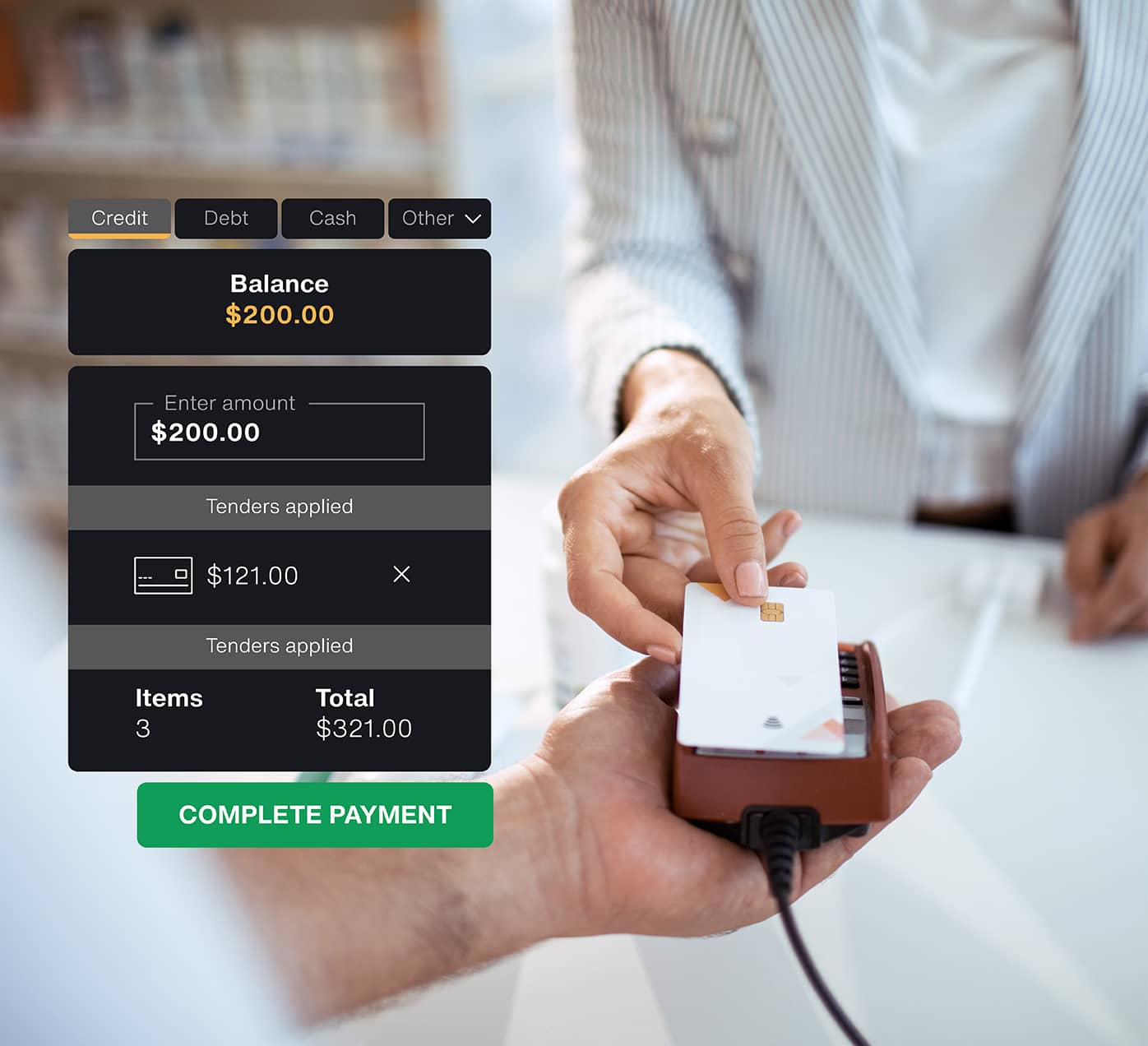
Enhanced Customer Experience
Flexible payment methods provide customers with convenience and choice, enhancing their overall shopping experience.
-

Reduced Abandoned Sales
Flexible payments can reduce the incidence of abandoned sales, as customers are less likely to back out of a purchase due to payment constraints.
-
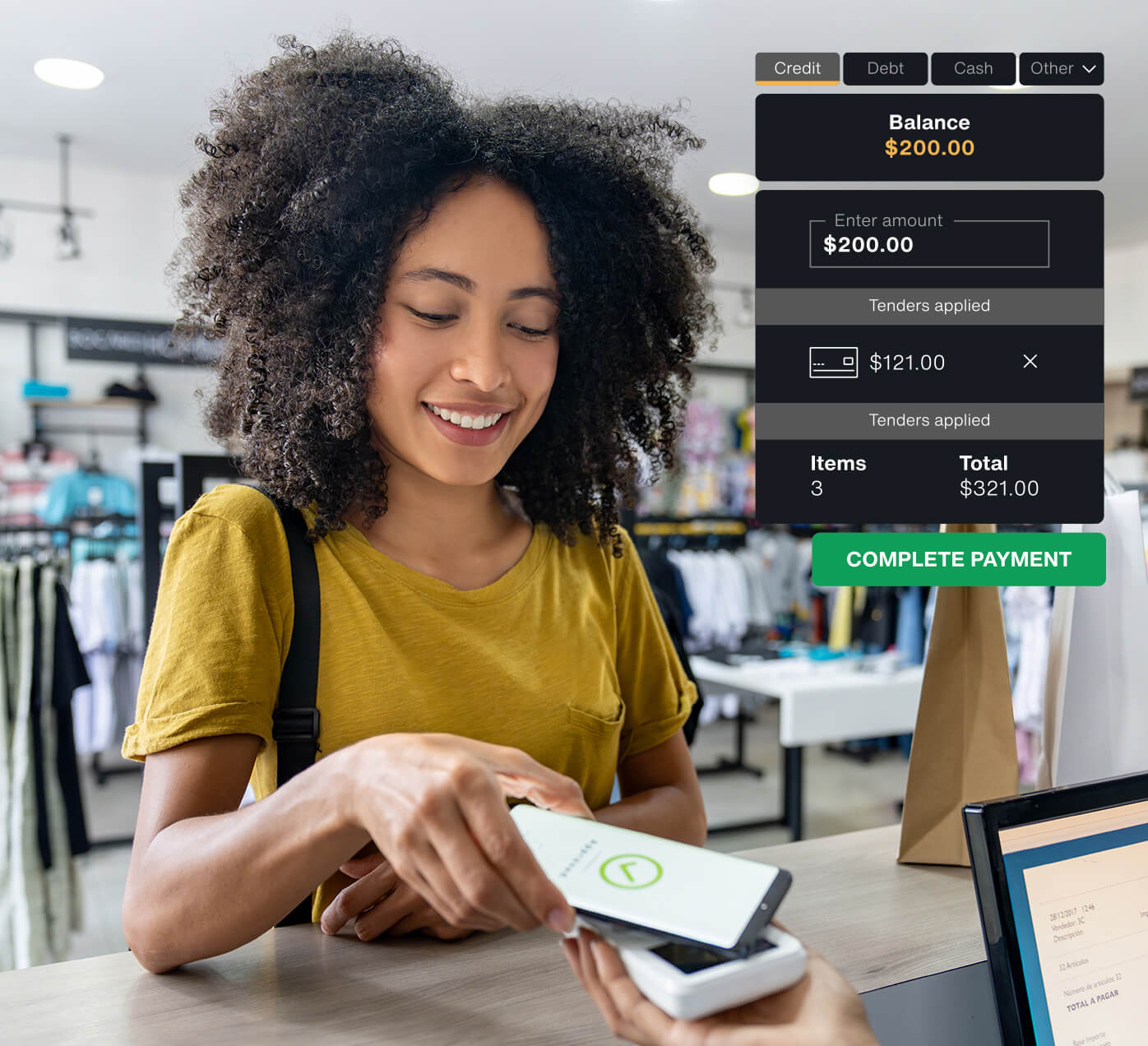
Attract a New Generation of Shoppers to Stores
Flexible payment options can attract new customers, especially those looking for digital payment methods in stores like mobile wallets.
"48% of Gen Z consumers claim they will abandon a shopping cart if their preferred payment method isn't available."

Contact Us
Ready to Provide Seamless Experiences?
Transform your store to provide seamless selling experiences.
5 Steps to Creating Modern Store Experiences
Unlock the store experience today's customers desire by digging deeper into each essential component of a successful Modern Store.

Empowered Associates
Store Associates, empowered by insight and technology, adeptly orchestrate modern store experiences.

Personal Retailing
Personalized engagement delights shoppers with individualized attention, expert advice, and elevated service.
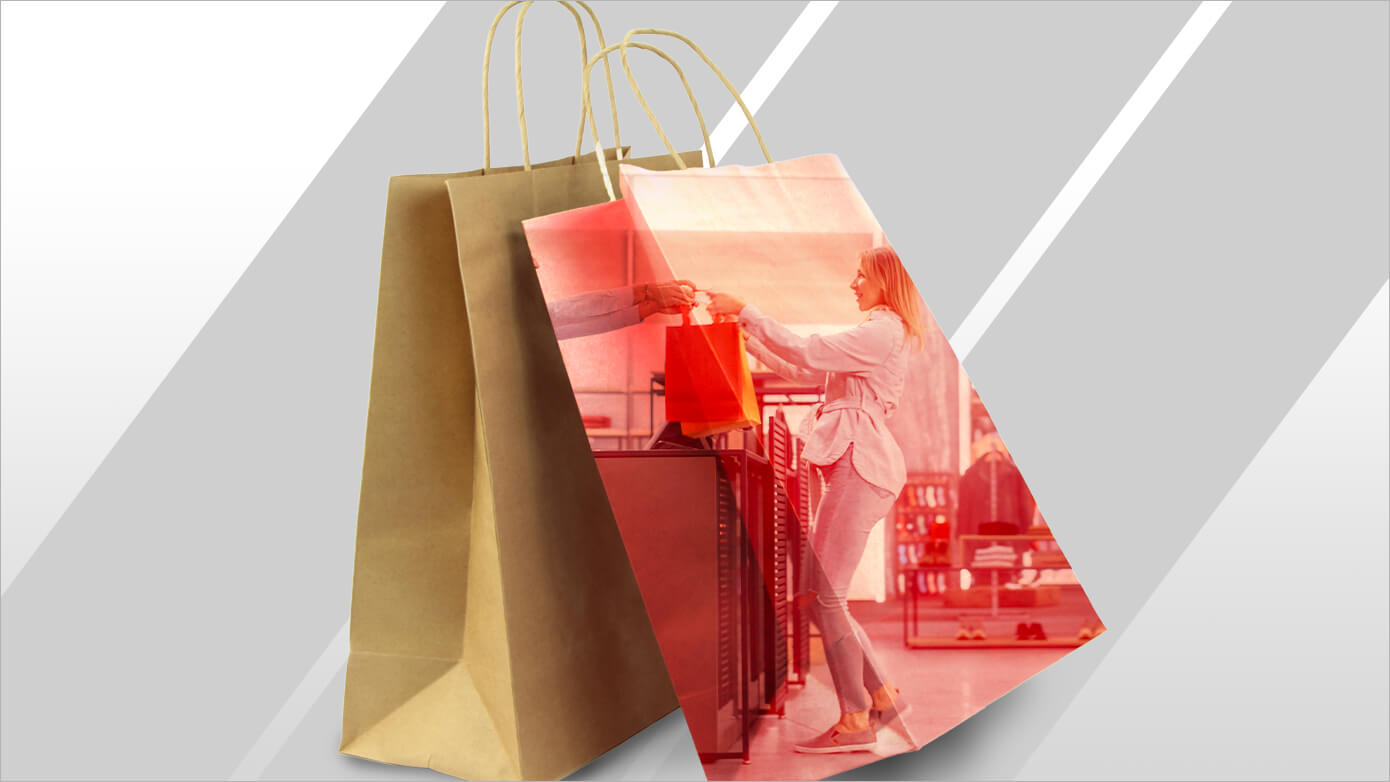
Store Fulfillment
Fast and reliable order pickup or shipping from stores fulfills modern shoppers' need for immediacy.

Insight-Driven
Prioritize the use of store and comparative insights to continuously improve operations and experiences.



